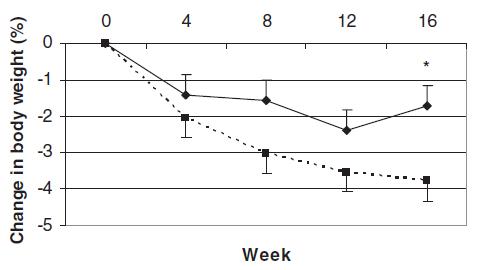Take a group of obese people (> 250 lbs) and put them on a massive calorie restricted diet. They lose weight and metabolic rate plummets. Weight loss fail? In most cases, yes. But a recent study showed that the decrepit post-weight loss metabolic rate gradually improves in parallel with an increase in dietary fat ingestion to such a degree that even after two long years: totally food intake was almost back to normal, energy expenditure improved, and all this happened despite continual weight loss. In other words, obesity is not permanent.
Decreased energy density and changes in food selection following Roux-en-Y gastric bypass (Laurenius et al., 2013)
Statistically speaking, no diet on Earth comes close to RYGB in terms of weight loss success. Long term. Seemingly permanent. It’s the closest thing to a cure we’ve got.
Body weight is down by 30%, and energy expenditure is rising faster than a speeding bullet. because food intake is increasing while body weight is dropping – they’re probably more active too ** weight loss than more exercise –
But there’s a more mystical aspect to RYGB that warrants attention. (it could be the increasing fat intake, but for now let’s just say it’s RYGB per se). According to this pearl, weight loss of only 10% via diet alone causes energy expenditure crash by 394-500 kcal/d, and physiological replacement of leptin via subcutaneous injection can increase this by 234-454 kcal/d (Rosenbaum, Murphy, Heymsfield, Matthews, and Leibel, 2002).





